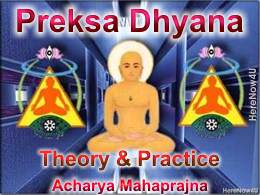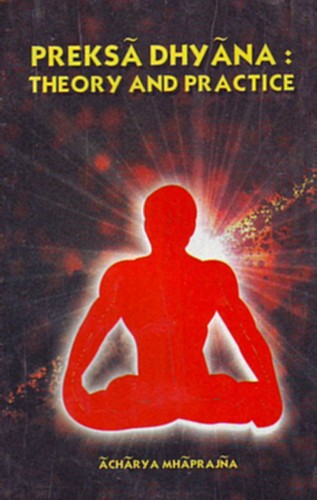
Impulses—Urges—Emotions/Feelings[1] - Action (see diagram)
| [1] The words emotion, feeling, passion, desire etc. refer to subjective states of mind with slight difference in meaning, depending on the context. The word 'emotion', for instance, is the most general and is used to mean all states of mind from the slightest change in mood to the most intense or violent seizures. |
As stated above, adhyavasaya, which are the primal drives, the subtlest animate expressions in the subtle body, are possessed by all living organisms. They are the prime movers of the threefold activities - mental, vocal and physical - which would be manifested later on in the gross physical body.
Proceeding towards the physical body, they pass through the domain/field of lesya, intermingle with it and are converted into urges and impulses, which are the forerunners of emotions, passions and feelings to be produced in the gross body. The field of lesya, is produced by the transcendental forces of the fruition of past actions which are fully recorded in the karma sarira. Empirically lesya may be conceived as a liaison between the past and the present careers of the soul as well as between the subtle and the gross bodies.

Now the radiations/microwaves of urges and impulses cross the border between the subtle body and the gross body. These compulsive forces, originating in the subtle body, first affect the endocrine system when they reach the physical body and compel the latter to secrete and distribute chemical messengers (hormones) suitable and corresponding to the nature and intensity of the impulses. Thus the hormones become the agents for executing the orders of primal drives in the physical body.
The chemical messengers secreted by the endocrines use blood circulation as transport, and interact with the brain and nervous system. Together they constitute an integral coordinating system now called the neuro-endocrine system. This system controls and regulates not only every bodily function but also profoundly influences mental states, emotions, thought, speech and behavioural patterns of the individual. Thus, the endocrines act as transformers between the most subtle spiritual self and gross physical body. They are gross as compared to the domain of adhyavasaya, but subtle when compared to the gross constituents, viz. muscles, blood and other bodily organs. This then is the inter-communicating mechanism within the body, which translates the code of intangible and imperceptible code of adhyavasaya into a form crude enough to function through flesh and bones.
Thought, speech and muscular action together constitute the domain of yoga [2]or bodily activity. It is not the domain of knowledge but that of action. The domain of knowledge extends as far as citta and then ends, while the domain of emotions ends at lesya From there onwards they manifest themselves through the three subordinate instruments of thinking, vocal equipment and the physical body. The functions of the mental faculty are thinking, planning (for the future), and memorizing (the past). It is not an instrument of knowledge. It is subordinate to citta and lesya and carries out their orders. Prior to this, it does not exist.
| [2] The term yoga here has a meaning different from the one used in the sense of sadhana or asana (postures), pranayama (breathing exercise) etc. Here it simply means an activity. |
 Acharya Mahaprajna
Acharya Mahaprajna

